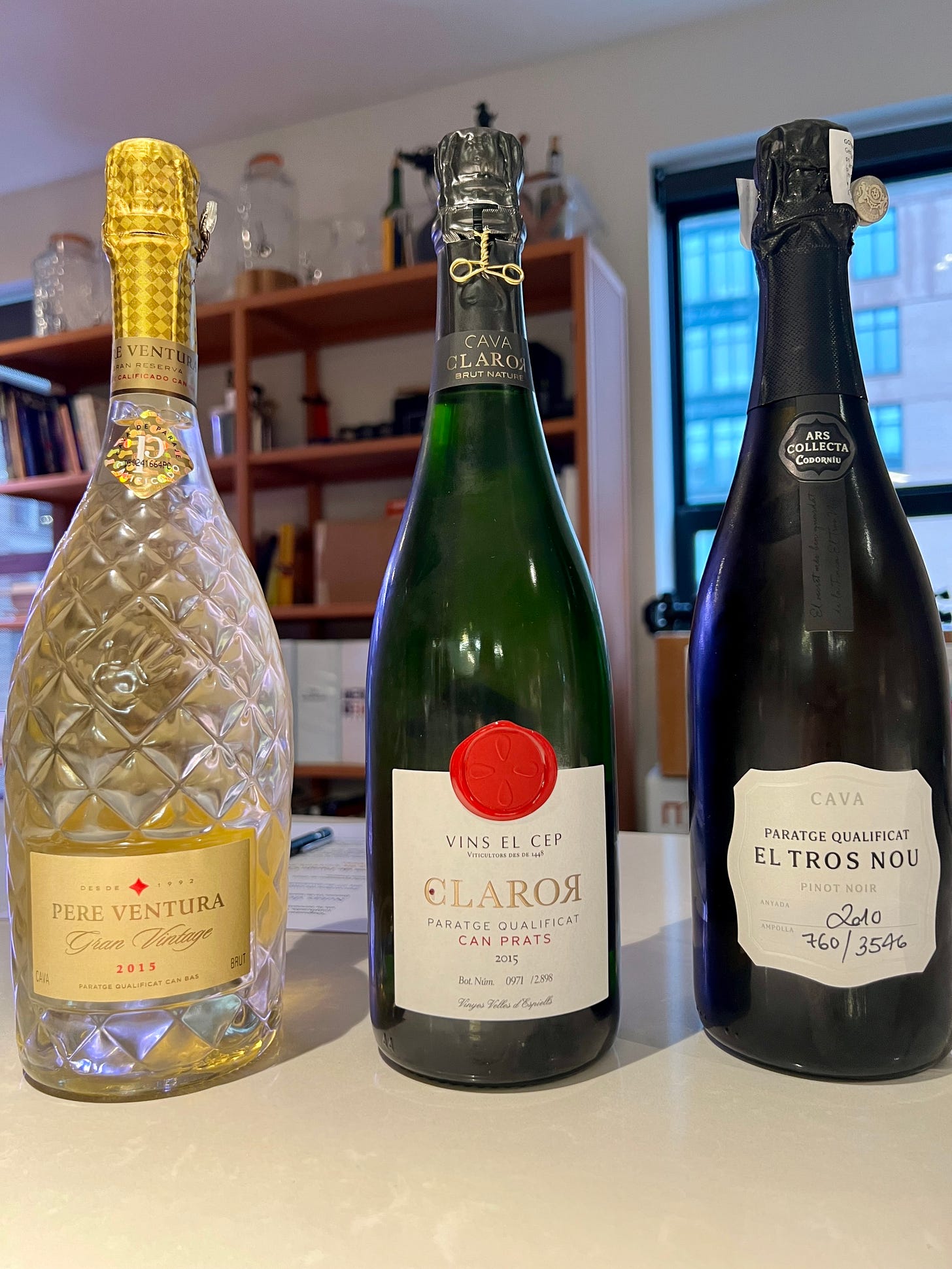Today, I want to tell you about something that even I am learning about…it’s nice when we can learn together, right?
Last year, if you remember, we talked all about Cava and other Spanish sparkling wines. Many of you shared your memories of a great glass of Cava—from your weddings from studying or living in Spain, from a New Years Eve party. There’s nothing I love more than a glass of wine…except for a glass of wine that has a great memory attached to it.
But one reader, Andrew, had a valid point…”I love Cava. But, I do think it is becoming confusing with all of the new geographic DO's. Let's keep this beautiful wine simple.”
You’re right. It’s a beautiful wine, let’s not make it too complicated. To have DO Cava, Corpinnat, Classic Penedès, and Conca del Riu Anoia…it’s a lot to understand (a DO, to remind you, is a designation of origin…meaning, to give a wine or cheese or other product a particular name, you need to follow a set of rules…what makes Manchego special is the region and the milk that goes into it, or Rioja wine is the region and the grapes).
The Spanish sommelier on my team, Jordi Paronella, just spoke at a conference in Barcelona, hosted by the association of Cava producers. There’s a new movement within the world of Cava to rebrand itself, because to many outsiders, Cava is simple and cheap, a far cry from Champagne. And to small Cava producers, it’s not a strong brand…you have huge winemakers that sell millions of bottles a year for $12—there’s no way you’d ever find a bottle of Champagne for $12!! (Oh…and in the US, the name is even harder, since there’s that Greek restaurant chain making things even more confusing!)
But as you might remember from last year, the production of Cava is actually quite similar to the production of Champagne…more than most Prosecco, for example. It’s fermented and riddled and disgorged like Champagne, aged in the bottle like Champagne. The grapes of course are different—the grapes of Cava are native to Spain (Macabeu, Xarel·lo, and Parellada) and the amount of time it’s aged is different—to be called Cava it must be aged a minimum of 9 months, where Champagne must be aged for 15 months. And Cava can technically be made in five different regions of Spain, not just Penedès—where Champagne has to be made in Champagne, France.
But that’s where things are changing, in order for the winemakers who make Cava to start reclaiming the story. There are new tiers of Cava that have been created in the last few years, to create more special, more distinctive bottles that speak to the beauty of Spanish sparkling wines and may someday compete with Champagne at all levels. Cava Reserva must be aged for 18 months, Gran Reserva for 30, and Cava de Paraje Calificado—”qualified location”—must be aged for a minimum of 36 months…equal to the amount of time that vintage Champagnes must be aged. They also must come from a single vineyard, which is different than the lower tiers.
These highest level Cavas are not yet available in the US, but my team was recently able to taste them and could see that there is something really magical going on. Yes, they were almost entirely spectacular, and I’m excited to see where things will go from here!
I know I told you at the beginning that this is all too confusing, and maybe I just made it more confusing. But I hope that someday everyone might be able to come back together under the same umbrella…a longer table?…to decide that Spanish sparkling wine is too special to fight about, and let’s make it better and better and better together.
For now, friends…this holiday season, when we are all looking for something special to celebrate with, go to your local wine store and ask them about Cava and other Spanish wines—I can assure you, even the best ones will be cheaper than Champagne. Or if you’re at Jaleo or The Bazaar or Mercado Little Spain or Spanish Diner, you should look at the wine list for a bottle of bubbles—sparkling wine pairs with anything, especially paella. Maybe it’s the Textures de Pedra from the maker Raventós…an amazing bottle of blanc de noirs, sparkling white wine made from red grapes—or if you’re feeling like you want to spend some money, go for Gramona’s Celler Batlle, a biodynamic Corpinnat that’s aged for more than nine years before being released.
If you’re at a shop, or at a restaurant, find a sommelier or someone who knows about wine and get a little wonky with them, ask them about aging and about where the Cava comes from, the maker, the soil, the process. We can all keep learning!







Adore a good cava! Have for years!!🥂
On a cold New York January day, my honey and I had a new year's glass of cava and a lovely lunch at Lena in Mercado Little Spain. First class kitchen, wine and service!